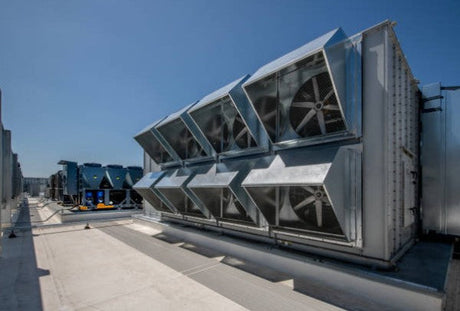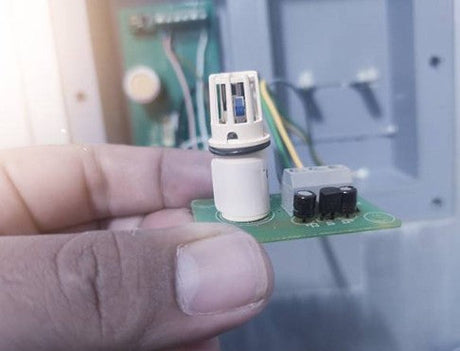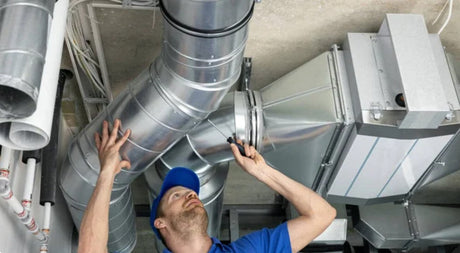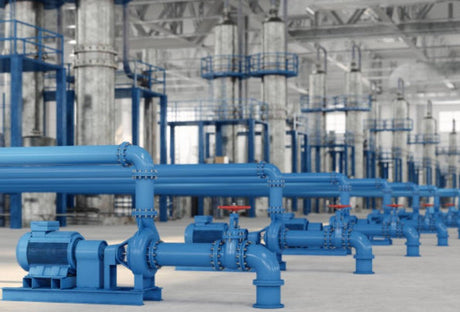In industrial production, stoves and dryers play a central role in processing a variety of materials. They are essential in processes in which products dried, hardened or changed in their structure and chemical composition. To ensure security and optimize the efficiency of these thermal processes, is a precise Flow monitoring of crucial importance. This applies in particular to the European standard EN 1539.
The EN 1539: 2015 "Drying systems for combustible fabrics - requirements for fire security" deals with safety aspects when drying combustible materials. It determines which measures need to be taken to minimize the risk of inflammation of the substances. The flow monitoring is an elementary part of these measures: it ensures that the risk of an uncontrolled explosion or a fire is reduced to an absolute minimum.
The risk: explosion and fire
Boilable substances that are processed in stoves and dryers can possibly form explosive mixtures with the air. This risk of explosion increases with the drying speed and the amount of the implemented material. An effective security concept must include preventive measures against the possible development of ignition sources and against the accumulation of flammable gases or dusts.
The role of flow monitoring
The flow monitoring plays a double role: on the one hand, it ensures that the required drying air is evenly distributed and on the other hand it serves as an early warning system in the event of a disturbance of the air flow. Both are used to prevent danger situations.
Inadequate current can lead to combustible gases and vapors accumulate and an explosive mixture is created. Conversely, a too strong air flow can dry out materials and thereby promote the formation of flammable dust. The monitoring of the air flow ensures that the air flow used is within the safe operating parameters.
Technical implementation of flow monitoring and energy -efficient control
Calorimetric sensors are often used for flow monitoring. These sensors use the principle of heating a heated element to the current and can thus detect changes in the air flow. State-of-the-art sensors offer high precision and quickly react to fluctuations in the current, which is essential for compliance with the EN 1539 norm. It is also important to meet the high requirements for functional security (Safety Integrity Level 2 or Performance Level D).
We have especially for this application Seickom Electronic Different devices developed:
- Sil2-compliant monitoring of the supply air with 4-20 mA analog signal and integrated switching point monitoring using a relay output: NLSW®45-3 Sil2 analogous to 2 sensors F3.x Sil2
- Sil2-compliant monitoring of the exhaust air Suitable for environments up to 250 ° C: NLSW®45-6 Sil2 in connection with sensors F8.x Sil2 - optionally available for environments up to 400 ° C
- Reliable energy-optimized control The oven or drying system with the RLSW®8 volume streaming device Suitable for environments up to 350 ° C with linear analogue signal, ideal for further processing in the PLC
Monitoring systems and alarm
In addition to measuring the flow speed, such a monitoring system also includes components for signal processing and alarm. In the event of deviations from the specified limit values, the systems automatically trigger alarms and can initiate countermeasures in connection with the control technology - for example, switching off heating sources or activating extinguishing systems.
Compliance with EN 1539 implies that the flow monitoring does not consider in isolation, but must be seen as part of an integrated security concept. This concept includes regular inspections and maintenance as well as a risk assessment, which also takes into account the possible dangers in the event of a system failure.
Another important aspect of fire security is the training of the operating staff. The employees must be able to understand the function and importance of flow monitoring and to react correctly if necessary. This also includes the knowledge of the basic requirements of EN 1539 and the company -specific security protocols.
Conclusion
The flow monitoring is a critical factor for the safe implementation of drying processes with combustible materials. It contributes significantly to minimizing the risk of fires and explosions and thus ensuring compliance with the EN 1539 standard. The use of high -quality monitoring systems and qualified training of the operating staff can significantly improve both security and efficiency of industrial stoves and dryers.
For further information on the optimal implementation of flow monitoring systems and to meet the requirements of EN 1539 in your company, please contact us directly. Seikom Electronic is always available to provide you with expertise and individual solutions.






